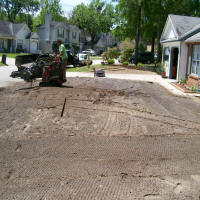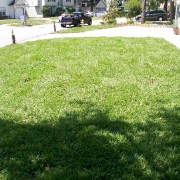Turf grass Disease Management
Turf grass diseases are difficult to understand . Fortunately, grasses maintained using proper cultural practices (water, mowing, fertility) are not as likely to become diseased or be as severely damaged as grasses not receiving proper care.
What is a disease?
Observing spots and patches of yellow or brown turf grass does not automatically mean the turf grass has a disease. While turf grass injuries or disorders may look like diseases, they are not diseases and should be treated differently. Because diseases are difficult to diagnose, it is often faster to rule out involvement of other factors than to verify the presence of disease. Diseases are the exception and not the rule for most turf grass plantings. By determining if other factors are causing the turf to look sick, you will solve the problem more quickly and avoid applying unnecessary fungicides.
An injury to turf grass is a destructive physical occurrence such as pesticide damage (image 1), mowing the grass too short (image 2) or a fuel leak. A turf grass disorder is an interaction between the plant and its environment that is usually associated with imbalances of physical or chemical requirements for turf grass growth. Examples would be nutritional deficiencies, cold stress, drought (image 3) or excessive rainfall. Again, while these problems may appear to be diseases, there are no pathogens involved. However, these injuries or disorders may weaken the turf so much that a pathogen may attack the plants and cause a disease.



